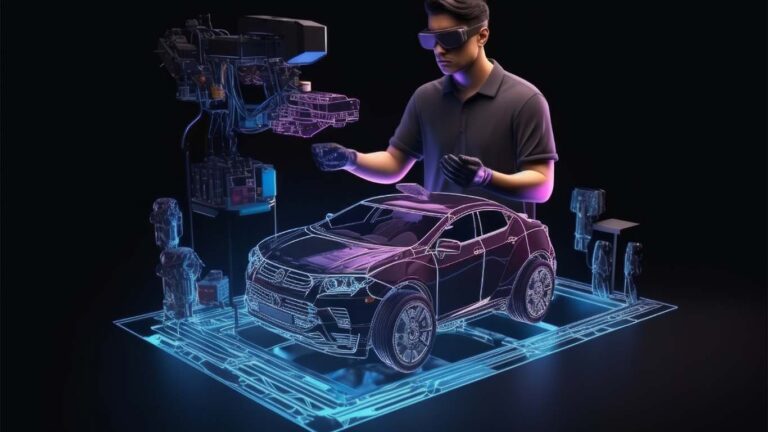
Automotive
The automotive industry is at a transformative crossroads. As technology evolves at breakneck speed, the way we think about mobility is being redefined. From autonomous vehicles to electric cars and smart transportation systems, the future of mobility promises not just convenience but a revolution in how we live, work, and interact with our environment.
1. The Rise of Electric Vehicles (EVs)
One of the most significant shifts in automotive innovation is the transition from traditional internal combustion engines to electric vehicles (EVs). Driven by environmental concerns, government regulations, and advancements in battery technology, EVs are no longer just a niche market. Major automakers like Tesla, Ford, Volkswagen, and GM are investing heavily in EV development, making electric cars more accessible and efficient than ever before.
The benefits of EVs are clear: zero emissions, lower operating costs, and reduced dependence on fossil fuels. Innovations like fast-charging infrastructure and longer battery life are addressing the key challenges that once hindered EV adoption. As battery technology continues to improve, we can expect EVs with greater ranges, faster charging times, and more affordable price points, making them the preferred choice for the masses.
2. Autonomous Vehicles: Driving Toward a Driverless Future
Autonomous vehicles (AVs), or self-driving cars, represent another groundbreaking innovation in the automotive sector. Companies like Waymo, Tesla, and Uber are leading the charge in developing vehicles capable of navigating without human intervention. While fully autonomous cars are still undergoing rigorous testing, the technology is advancing rapidly.
AVs promise to enhance road safety, reduce traffic congestion, and improve mobility for people with disabilities or those unable to drive. They rely on complex systems of sensors, cameras, artificial intelligence, and machine learning to interpret their surroundings and make real-time driving decisions. As regulatory frameworks evolve and public trust grows, autonomous vehicles could become a common sight on our roads within the next decade.
3. Connected Cars and Smart Transportation Systems
The concept of the “connected car” is transforming vehicles from standalone machines into integral parts of a larger digital ecosystem. Through advanced telematics and IoT (Internet of Things) technology, modern cars can communicate with each other, traffic signals, and even infrastructure. This connectivity enables features like real-time traffic updates, predictive maintenance alerts, and over-the-air software updates.
Smart transportation systems, powered by connected cars, are also revolutionizing urban mobility. Intelligent traffic management can optimize traffic flow, reduce emissions, and improve public safety. In the future, we may witness the development of smart cities where vehicles seamlessly interact with their environment, creating efficient and sustainable transportation networks.
4. The Role of Artificial Intelligence and Data Analytics
Artificial Intelligence (AI) and data analytics are at the heart of many automotive innovations. From enhancing driver assistance systems to optimizing supply chains, AI is driving efficiency across the industry. Advanced algorithms analyze vast amounts of data to improve vehicle performance, predict maintenance needs, and even personalize the driving experience.
In the context of mobility, AI can optimize route planning, reduce fuel consumption, and enhance traffic management. As machine learning models become more sophisticated, we can expect even greater advancements in predictive analytics, leading to smarter, safer, and more efficient transportation systems.
5. The Shift Toward Sustainable Mobility
Sustainability is no longer an option—it’s a necessity. The automotive industry is increasingly focused on reducing its environmental footprint. This shift includes not just EVs but also the development of hydrogen fuel cell vehicles, eco-friendly manufacturing processes, and sustainable materials in vehicle production.
Moreover, shared mobility solutions, such as carpooling, ride-hailing, and micro-mobility options (e.g., e-scooters and bikes), are reducing the number of vehicles on the road, decreasing traffic congestion, and lowering emissions. The future of mobility is not just about the vehicles themselves but about creating integrated, sustainable transportation ecosystems.
Conclusion
The future of mobility is being shaped by innovations that are redefining what it means to move from one place to another. Electric vehicles, autonomous driving, connected cars, AI, and sustainable practices are all part of this dynamic transformation. As these technologies mature, we can expect a future where transportation is not only faster and more convenient but also safer, smarter, and more environmentally friendly.
In embracing these changes, the automotive industry holds the key to a more connected, efficient, and sustainable world. The road ahead may be complex, but it’s undoubtedly an exciting journey toward the future of mobility.
Share this content:







